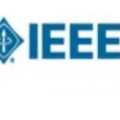Autonomous Micro Aerial Vehicles (MAVs) have the potential to be employed for surveillance and monitoring tasks. By perching and staring on one or multiple locations aerial robots can save energy while concurrently increasing their overall mission time without actively flying. In this paper, we address the estimation, planning, and control problems for autonomous perching on inclined surfaces with small quadrotors using visual and inertial sensing. We focus on planning and executing of dynamically feasible trajectories to navigate and perch to a desired target location with on board sensing and computation. Our planner also supports certain classes of nonlinear global constraints by leveraging an efficient algorithm that we have mathematically verified. The on board cameras and IMU are concurrently used for state estimation and to infer the relative robot/target localization. The proposed solution runs in real-time on board a limited computational unit. Experimental results validate the proposed approach by tackling aggressive perching maneuvers with flight envelopes that include large excursions from the hover position on inclined surfaces up to 90$^\circ$, angular rates up to 600~deg/s, and accelerations up to 10m/s^2.
翻译:自动微型航空飞行器(MAV)有可能被用于监视和监测任务。通过对一个或多个位置进行仔细检查和监视,空中机器人可以节省能源,同时在不积极飞行的情况下增加总任务时间,同时增加其总任务时间。在本文件中,我们用视觉和惯性感测,解决利用小型四重体对倾斜表面进行自动穿透的估算、规划和控制问题;我们侧重于规划和实施动态可行的轨道,以便导航和穿透到一个理想目标位置,同时在船上进行感测和计算。我们的规划员还利用一个高效的算法,支持某些非线性全球限制类别。机上摄像机和IMU同时用于进行状态估计和推断相对机器人/目标定位。拟议解决方案在有限的计算单位上实时运行。实验结果验证了拟议办法,通过从倾角表面悬浮位置到90 ⁇ circ$的大型外推力,从悬浮位置到600 ~deg/s,加速到10m/s2。




